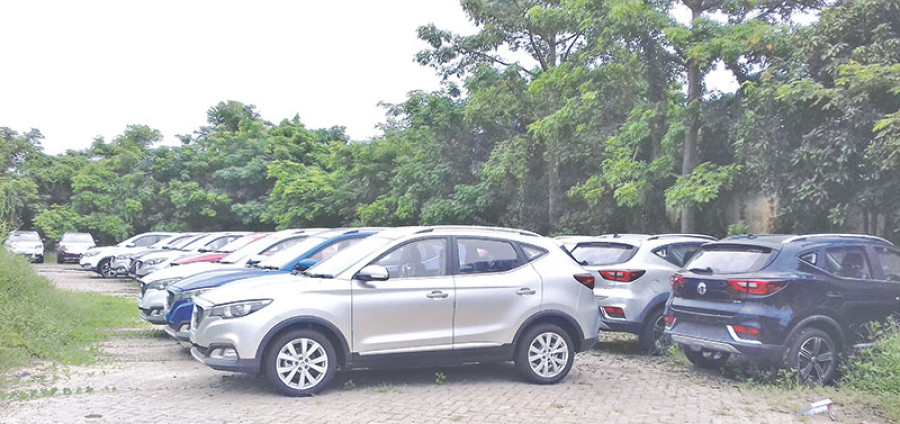Money
Vehicle imports via Sirsiya ICD surge 31pc
Imports of four-wheeler passenger vehicles (jeep, car, van) through the Sirsiya Inland Container Depot (ICD) surged 31 percent to hit Rs373.3 million in fiscal year 2017-18, up from Rs284.1 million in 2016-17.
Shankar Acharya
Imports of four-wheeler passenger vehicles (jeep, car, van) through the Sirsiya Inland Container Depot (ICD)
surged 31 percent to hit Rs373.3 million in fiscal year 2017-18, up from Rs284.1 million in 2016-17.
Over the period, the number of vehicles that the country imported increased by nearly three-fold. According to the customs office at Sirsiya, Nepal imported 796 of these passenger vehicles compared to 291 units in the review period. With a surge in imports, the government collected customs revenue of Rs600.4 million, up from Rs454.4 million.
Dhan Bahadur Baruwal, information officer of the customs office, said the surge in imports was mainly due to a whopping rise in the number of electric vehicles. According to him, electric vehicles imported from China made the lion’s share of the country’s import bills last year. Nepal imported these small four-wheelers through railway rakes from Kolkata port in India en route the dry port in Sirsiya.
The government through the budget announcement for this fiscal year has highlighted on facilitating the use of electric vehicles, mainly for public transportation. For the purpose, the government has also planned to install charging stations at the major locations where these vehicles ply.
Jeeps, cars and vans stood in the top 10 major importable goods through the dry port over the period. Importers prefer Kolkata-Sirsiya trading route to import mainly luxury vehicles to minimise the risk which they otherwise could face in transit while ferrying via road.
Vehicles from brands such as Land Rover, Mercedes, MG, Ford and Peugeot, among others are some of the main luxury vehicles that the country imports in significant numbers. Likewise, the trading route is also the first choice among diplomatic agencies along with other international organisations while importing vehicles for their purpose.
Being the shortest trade route, Birgunj customs and Sirsiya dry port are the popular entry points to import vehicles from India and third countries. Duty collected on vehicle imports is a major source of income for the government.
It accounts for around 40 percent of the government revenue.
Customs on car, jeep and van contribute about half of the revenue generated from vehicles. The government collects up to 250 percent import duty on these vehicles.




 24.02°C Kathmandu
24.02°C Kathmandu













